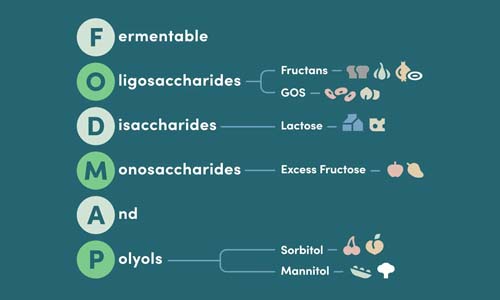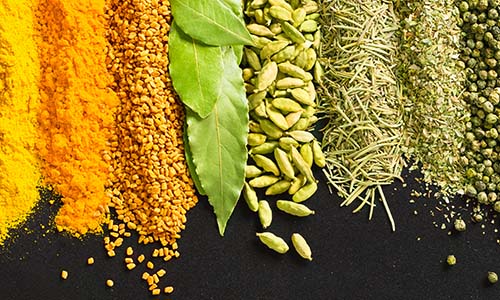Is Edamame Low FODMAP? Complete IBS-Safe Guide

Key Takeaways
- Edamame is low FODMAP when consumed at or below 90 grams.
- Approximately half a cup in pods or three-quarters cup shelled beans is the safe serving size.
- Larger portions of edamame can be high in FODMAPs and may cause digestive symptoms.
- Eating the recommended serving size provides quality plant protein without bloating.
Table of Contents
- Low FODMAP 101: Understanding What Makes a Food "Safe" for Sensitive Guts
- Is Edamame Low FODMAP? Serving Size, Science, and Real-World Guidance
- The Nutritional Power of Edamame, Without Digestive Discomfort
- Edamame vs. Other Beans and Soy: How Do They Stack Up for Low FODMAP Eating?
- How to Prepare and Enjoy Edamame the Low FODMAP Way
- Best Low FODMAP Edamame Recipes: Flavorful Ideas for Every Meal
- Navigating Packaged and Restaurant Edamame: Label Reading and Smart Ordering
- Beyond Edamame: The Best Low FODMAP Plant Proteins and Snacks
- Troubleshooting & Solutions: When Edamame Doesn't Agree With You
- The Gourmend Difference: Building Delicious, Gut-Friendly Meals, One Ingredient at a Time
Is Edamame Low FODMAP? The Complete Guide for IBS & Plant-Based Foodies
Low FODMAP 101: Understanding What Makes a Food "Safe" for Sensitive Guts
FODMAPs are short-chain carbohydrates that ferment in your gut, creating gas, bloating, and digestive distress for people with IBS. The acronym covers five types: fermentable oligosaccharides, disaccharides, monosaccharides, and polyols. When these compounds reach your large intestine undigested, gut bacteria feast on them, producing symptoms that can derail your day.
The low FODMAP approach works in three phases: elimination (removing high FODMAP foods for 2-6 weeks), reintroduction (testing individual FODMAP groups), and personalization (creating your unique tolerance map). Portion size matters crucially, many foods like edamame are low FODMAP in small amounts but become problematic in larger servings.
Not all plant proteins play by the same rules. While mature soybeans are high FODMAP due to galacto-oligosaccharides (GOS), young edamame contains significantly less of these troublesome compounds. This difference explains why is edamame low FODMAP gets a qualified "yes", with portion control as your safety net.
Is Edamame Low FODMAP? Serving Size, Science, and Real-World Guidance

Edamame is low FODMAP at 90 grams or less, according to Monash University's rigorous testing. These young, immature soybeans contain lower concentrations of GOS compared to their fully mature counterparts. The key lies in their harvesting stage, picked when pods are plump but beans remain tender and sweet.
Fresh, frozen, and plain steamed edamame all follow the same 90-gram rule. However, flavored varieties often contain high FODMAP ingredients like garlic powder or onion seasoning. Always check labels for these hidden triggers, especially in restaurant preparations or packaged snack versions.
To measure 90 grams at home without a scale, think half a cup of pods or about three-quarters cup of shelled beans. This translates to roughly 15-20 medium pods, enough for a satisfying snack or substantial salad addition. For meal planning, this portion provides approximately 8 grams of complete protein and 4 grams of fiber.
The beauty of understanding edamame low FODMAP parameters lies in flexibility. You can enjoy this nutritious legume 3-4 times per week as part of a varied diet, rotating with other low FODMAP proteins like quinoa, tofu (firm, up to 170g), or our Gourmend Foods broths for plant-forward meals that satisfy without symptoms.
The Nutritional Power of Edamame, Without Digestive Discomfort
Edamame delivers complete protein with all nine essential amino acids, rare among plant foods. A 90-gram serving provides 8 grams of high-quality protein, plus folate, vitamin K, iron, and magnesium. The fiber content supports gentle regularity without the gas production associated with larger legume servings.
Unlike mature soybeans that can trigger digestive upset, edamame's immature state means lower antinutrient levels and easier digestion. The beans' natural sweetness comes from simple sugars rather than complex oligosaccharides, making them friendlier for sensitive systems while maintaining nutritional density.
For maximum nutrition absorption, steam edamame lightly and pair with vitamin C-rich foods like bell peppers or strawberries to enhance iron uptake. The combination works beautifully in grain bowls with quinoa and our Gourmend vegetable broth, creating satisfying meals that support both gut health and nutritional goals.
Edamame vs. Other Beans and Soy: How Do They Stack Up for Low FODMAP Eating?
When comparing plant proteins for digestive sensitivity, edamame stands out for its generous serving size and complete amino acid profile. While chickpeas limit you to ¼ cup and lentils to ⅓ cup cooked, edamame's 90-gram allowance provides more flexibility for meal planning.
| Plant Protein | Low FODMAP Serving | Protein per Serving | FODMAP Type | Best For |
|---|---|---|---|---|
| Edamame | 90g (¾ cup shelled) | 8g | GOS (low at this portion) | Snacks, salads, sides |
| Firm Tofu | 170g (¾ cup cubed) | 12g | GOS (processed out) | Stir-fries, main dishes |
| Canned Lentils | 46g (⅓ cup) | 6g | GOS, fructans | Soups, curries |
| Quinoa | 155g (1 cup cooked) | 8g | None | Grain bowls, meal base |
| Chickpeas | 42g (¼ cup) | 4g | GOS, fructans | Garnish, small portions |
The strategic advantage of rotating these proteins prevents FODMAP stacking while maintaining nutritional variety. Plan weekly meals using edamame twice, tofu once, and quinoa as your reliable base grain. This rotation keeps your digestive system comfortable while meeting protein needs through diverse, flavorful combinations.
For optimal results, pair any of these proteins with Gourmend shelf-stable broth cartons. Our broths use chive sprigs and leek greens instead of problematic onions, delivering the depth you crave without digestive compromise.
How to Prepare and Enjoy Edamame the Low FODMAP Way

Select fresh edamame with bright green, plump pods, or choose plain frozen varieties without seasoning packets. Steam for 3-5 minutes until tender but still firm, overcooking creates mushy texture and may concentrate FODMAPs through water loss.
Portion control becomes effortless with simple measuring techniques. Use a standard measuring cup to scoop ½ cup of pods, or count approximately 15-20 medium pods per serving. For shelled beans, ¾ cup provides your 90-gram limit while leaving room for other meal components.
Season safely using chive sprigs, sea salt, sesame oil, or lemon juice. Avoid garlic salt, onion powder, and pre-made seasoning blends that often contain hidden FODMAP triggers. If you accidentally exceed the 90-gram limit, space your next meal 3-4 hours later and choose easily digestible options like rice or our Gourmend chicken bone broth.
Store prepared edamame in the refrigerator for up to three days, making batch preparation practical for busy weeks. Pre-portion into small containers with your chosen seasonings for grab-and-go snacks that support both convenience and digestive wellness.
Best Low FODMAP Edamame Recipes: Flavorful Ideas for Every Meal
Edamame & Quinoa Power Bowl
Best for: Satisfying lunch with complete nutrition
Combine 90g steamed edamame with 1 cup cooked quinoa, diced bell peppers, and shredded carrots. Dress with sesame oil, rice vinegar, and fresh chive sprigs. Finish with a splash of Gourmend vegetable broth for extra umami depth.
Japanese-Inspired Cucumber Salad
Best for: Light side dish or appetizer
Toss 65g shelled edamame with sliced cucumber, cherry tomatoes, and scallion greens. Create dressing using rice vinegar, sesame oil, and a pinch of grated ginger. Serve chilled for maximum refreshment.
Rainbow Stir-Fry with Gourmet Broth
Best for: Quick weeknight dinner
Stir-fry 90g edamame with bok choy, red bell peppers, and snap peas in sesame oil. Deglaze pan with ¼ cup Gourmend shelf-stable broth carton for rich flavor without garlic or onion. Serve over jasmine rice.
Each recipe keeps edamame portions within safe limits while maximizing flavor through strategic ingredient pairing. For more inspiration and exact measurements, visit our complete low FODMAP recipe collection.
If you're looking to expand your low FODMAP meal ideas, you might also enjoy this low FODMAP miso salmon recipe for a protein-rich, gut-friendly dinner option.
Navigating Packaged and Restaurant Edamame: Label Reading and Smart Ordering
Restaurant edamame often arrives over-portioned and heavily salted with garlic. Request a half portion and ask specifically about seasoning ingredients. Most Japanese restaurants can prepare plain steamed edamame with just sea salt, your safest bet for dining out without digestive surprise.
When scanning packaged edamame labels, avoid products containing garlic powder, onion powder, or "natural flavors" which may hide FODMAP triggers. Frozen edamame in simple salt brine or completely unseasoned varieties offer the most control over your final preparation.
Create your own restaurant-quality seasoning blend using ingredients you trust: combine sea salt, sesame seeds, and dried chive flakes. This mixture travels well and transforms plain edamame into a gourmet experience without compromising your digestive comfort.
Label Reading Checklist:
- ✓ Ingredients list shows only "edamame" and "salt"
- ✓ No garlic powder, onion powder, or shallot seasoning
- ✓ Avoid "natural flavors" without specification
- ✓ Check serving size matches your 90g limit
Beyond Edamame: The Best Low FODMAP Plant Proteins and Snacks

Diversifying beyond edamame prevents flavor fatigue and supports a balanced gut. Rotating your plant proteins is key for both nutrition and digestive comfort.
Smart Rotation Strategy: Alternate between edamame, quinoa, and seeds throughout the week to maximize nutrition while staying within FODMAP limits. This prevents both flavor fatigue and accidental FODMAP stacking.
| Plant Protein | Safe Serving Size | Protein per Serving | Best Use Case | Flavor Profile |
|---|---|---|---|---|
| Edamame | 90g (½ cup pods) | 8g | Quick snack, salad topper | Mild, slightly sweet |
| Firm Tofu | 170g (¾ cup cubed) | 12g | Stir-fries, marinades | Neutral, absorbs flavors |
| Quinoa | 1 cup cooked | 8g | Grain bowls, meal base | Nutty, versatile |
| Pumpkin Seeds | 2 tablespoons | 5g | Crunchy topping, trail mix | Rich, earthy |
| Canned Lentils | ¼ cup (limit strictly) | 6g | Soups, small portions only | Hearty, filling |
Three Weekly Rotation Templates:
For IBS Beginners: Monday/Wednesday/Friday - edamame snacks; Tuesday/Thursday - quinoa bowls; weekends - tofu stir-fries with Gourmend vegetable broth for gentle flavor building.
For Time-Savers: Batch-prep Sunday: steam edamame portions, cook quinoa, cube tofu. Mix and match throughout the week with pre-portioned Gourmend shelf-stable broth cartons for instant flavor.
For Bold Flavor Seekers: Rotate proteins daily, each paired with different Gourmend broths and seasonings. Edamame with sesame and chive sprigs, quinoa with beef bone broth, tofu marinated in vegetable broth with scallion greens.
If you want more plant-based inspiration, check out this recipe for low FODMAP mushroom risotto, a creamy, satisfying dish that pairs well with edamame or tofu.
Troubleshooting & Solutions: When Edamame Doesn't Agree With You
Even within safe FODMAP limits, some people experience discomfort with edamame. This doesn't mean you're doing anything wrong, individual tolerance varies beyond FODMAP content alone.
Common Culprits Beyond FODMAPs:
FODMAP Stacking occurs when multiple low FODMAP foods consumed together exceed your daily threshold. If you ate edamame plus quinoa plus small portions of other conditional foods, the cumulative effect might trigger symptoms.
Fiber Sensitivity affects some IBS sufferers independently of FODMAPs. Edamame's insoluble fiber, while beneficial for most, can cause gas or bloating in sensitive individuals during flare periods.
Processing Differences matter, frozen edamame often contains more sodium than fresh, while flavored varieties hide garlic powder or onion seasoning that aren't FODMAP-tested.
Step-by-Step Troubleshooting:
1. Pause and Reset: Skip edamame for 3-5 days. Focus on your most reliable safe foods, rice, carrots, chicken, or eggs.
2. Check Your Context: Review what else you ate within 4 hours. Look for FODMAP stacking or new ingredients that might be the actual trigger.
3. Reintroduce Smaller: Try 45g (quarter-cup shelled) instead of the full 90g serving. Some people have lower thresholds for specific foods.
4. Adjust Preparation: Switch from salted to plain steamed edamame. Remove pods completely to reduce fiber load. Chew thoroughly and eat slowly.
5. Time Your Portions: Eat edamame earlier in the day when digestion is typically stronger, not as a late dinner side.
Safe Swaps for Sensitive Days:
Replace edamame protein with firm tofu (170g serving), which many people tolerate better due to processing that breaks down fiber. Alternatively, use quinoa or pumpkin seeds for plant-based protein without the legume family complexity.
Remember: temporary sensitivity doesn't equal permanent restriction. Many Gourmend customers successfully reintroduce foods after gut healing phases, especially when paired with flavorful, gentle broths that support comfortable digestion.
For more tips on managing FODMAPs in your diet, you may also find this article on is avocado low FODMAP helpful as you explore other plant-based options.
For a scientific overview of FODMAPs and their impact on IBS, see this comprehensive review on FODMAPs and IBS.
The Gourmend Difference: Building Delicious, Gut-Friendly Meals, One Ingredient at a Time
Creating satisfying low FODMAP meals shouldn't require sacrificing flavor or spending hours in the kitchen. At Gourmend Foods, we've solved the fundamental challenge: how to deliver restaurant-quality depth without the ingredients that trigger digestive distress.
Our Ingredient Philosophy:
Where conventional broths rely on onion and garlic for depth, we use chive sprigs, scallion greens, and leek tops, the FODMAP-safe parts of the allium family that provide the same savory complexity. Our beef and vegetable broths incorporate nori seaweed and oyster mushrooms for natural umami that rivals any garlic-heavy stock.
What We Never Use: Onion bulbs, garlic cloves, shallots, artificial flavors, or mystery "natural flavoring" that could hide FODMAP triggers.
What We Always Include: Clean, identifiable ingredients that build flavor layers without digestive compromise.
Practical Application:
The edamame recipes throughout this guide become exponentially more satisfying when you use Gourmend shelf-stable broth cartons as your flavor foundation. Steam your 90g edamame portion, then toss with a splash of our vegetable broth, fresh chive sprigs, and a pinch of sea salt. The result rivals any restaurant appetizer, without the post-meal regret.
For complete recipe inspiration and our conversion tool that transforms any high-FODMAP recipe into a gut-friendly masterpiece, visit our Low FODMAP Recipe Conversion Tool.
Frequently Asked Questions
What is the safe serving size of edamame to keep it low FODMAP and avoid digestive symptoms?
Edamame is low FODMAP when consumed at 90 grams or less, which is about half a cup in pods or three-quarters of a cup shelled. Staying within this serving size helps you enjoy its plant protein without triggering digestive discomfort.
How does edamame compare to mature soybeans and other soy products in terms of FODMAP content?
Edamame, being young and immature soybeans, contains significantly less FODMAPs like galacto-oligosaccharides (GOS) compared to mature soybeans, which are high FODMAP. This makes edamame a safer soy option for low FODMAP diets when eaten in appropriate portions.
Are there any precautions to take when buying or eating flavored or restaurant-prepared edamame regarding FODMAPs?
Flavored or restaurant-prepared edamame may include high FODMAP ingredients like garlic or onion, so it’s wise to check labels or ask about seasonings. Choosing plain edamame or those seasoned with low FODMAP alternatives helps keep your meal gentle on digestion.
How can edamame be incorporated into a low FODMAP diet alongside other plant-based protein sources?
Edamame pairs well with other low FODMAP plant proteins like quinoa, firm tofu, and small servings of lentils. Combining these ingredients creates balanced, flavorful meals that support gut comfort and provide variety without compromising on nutrition.





